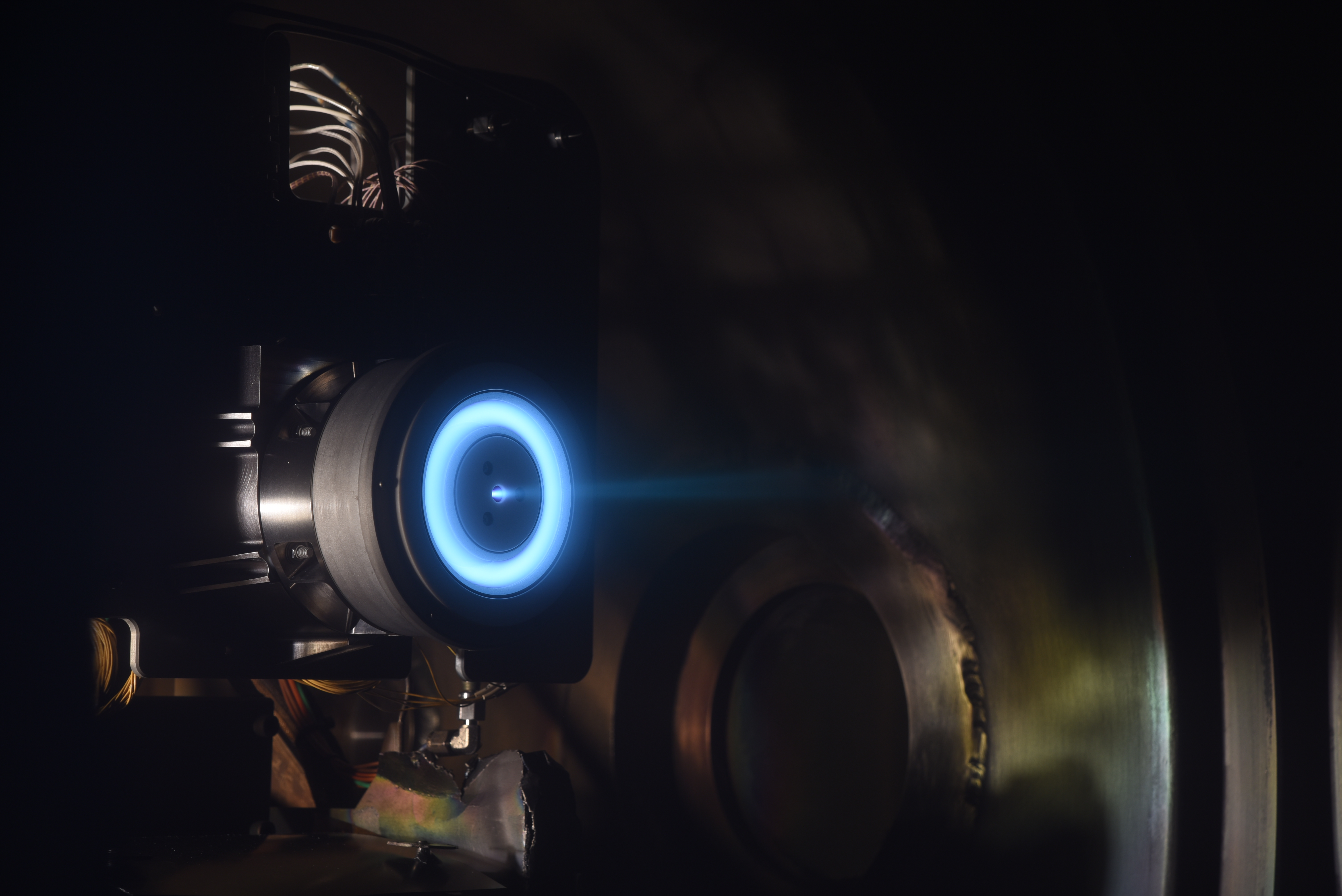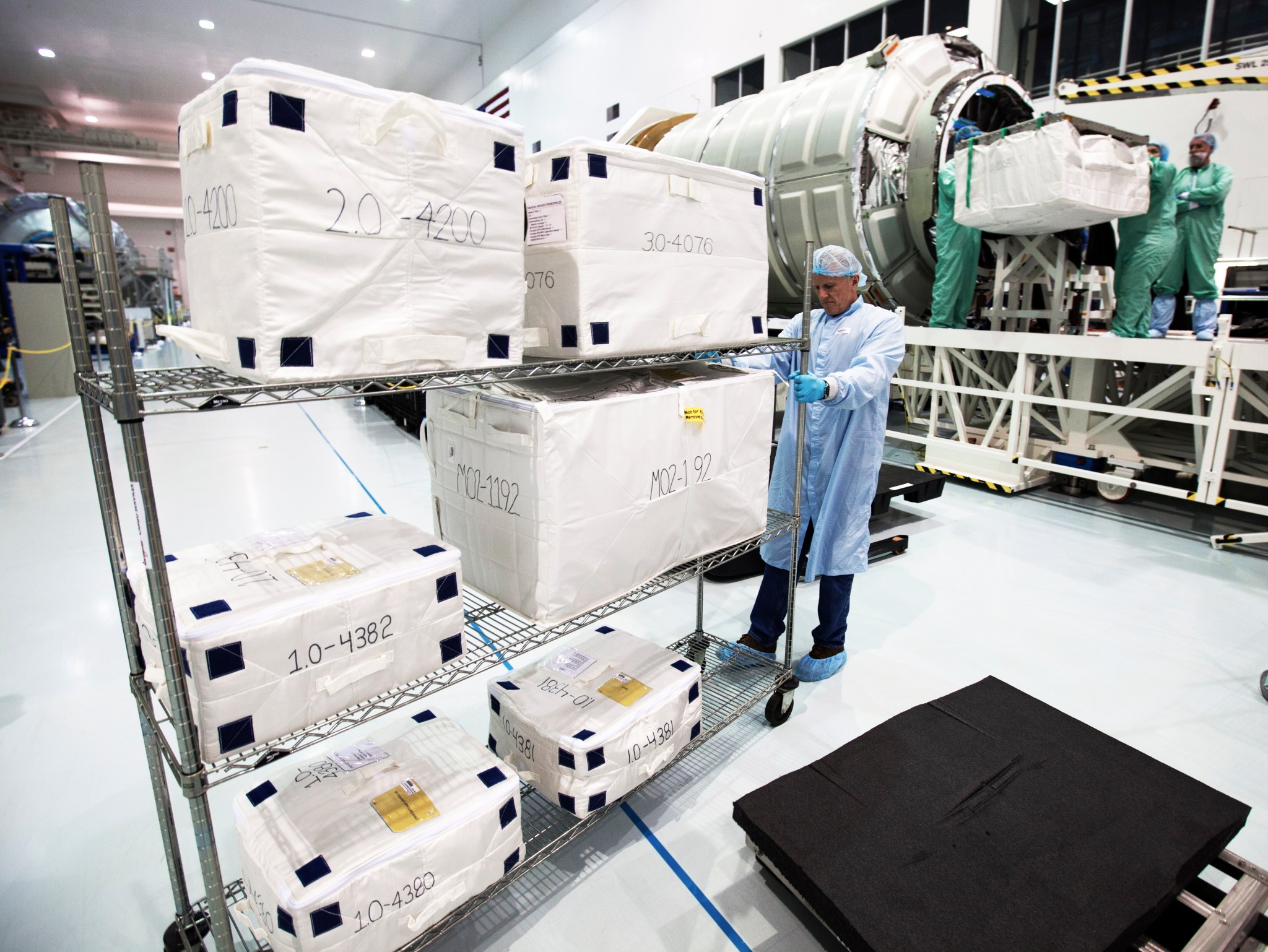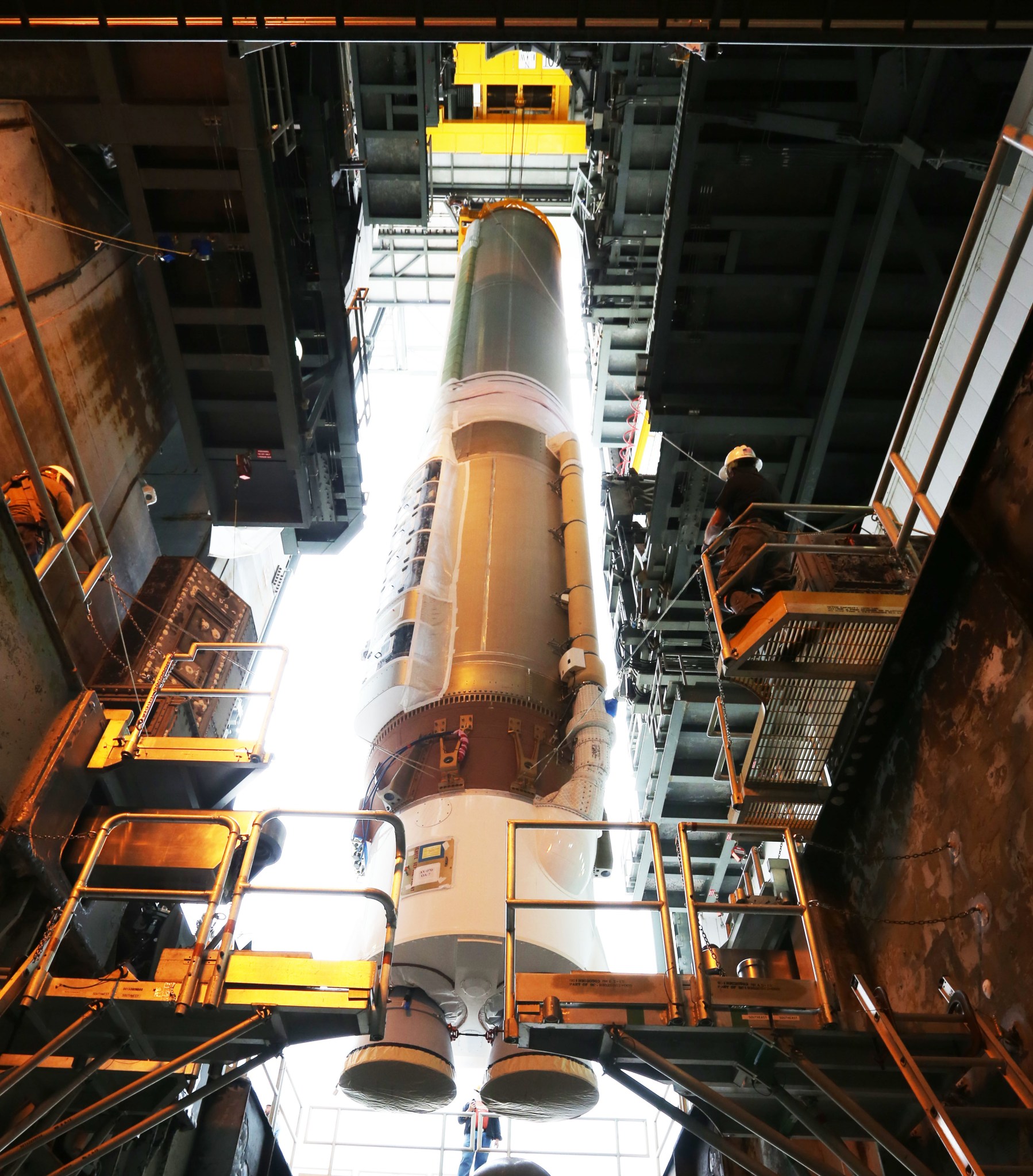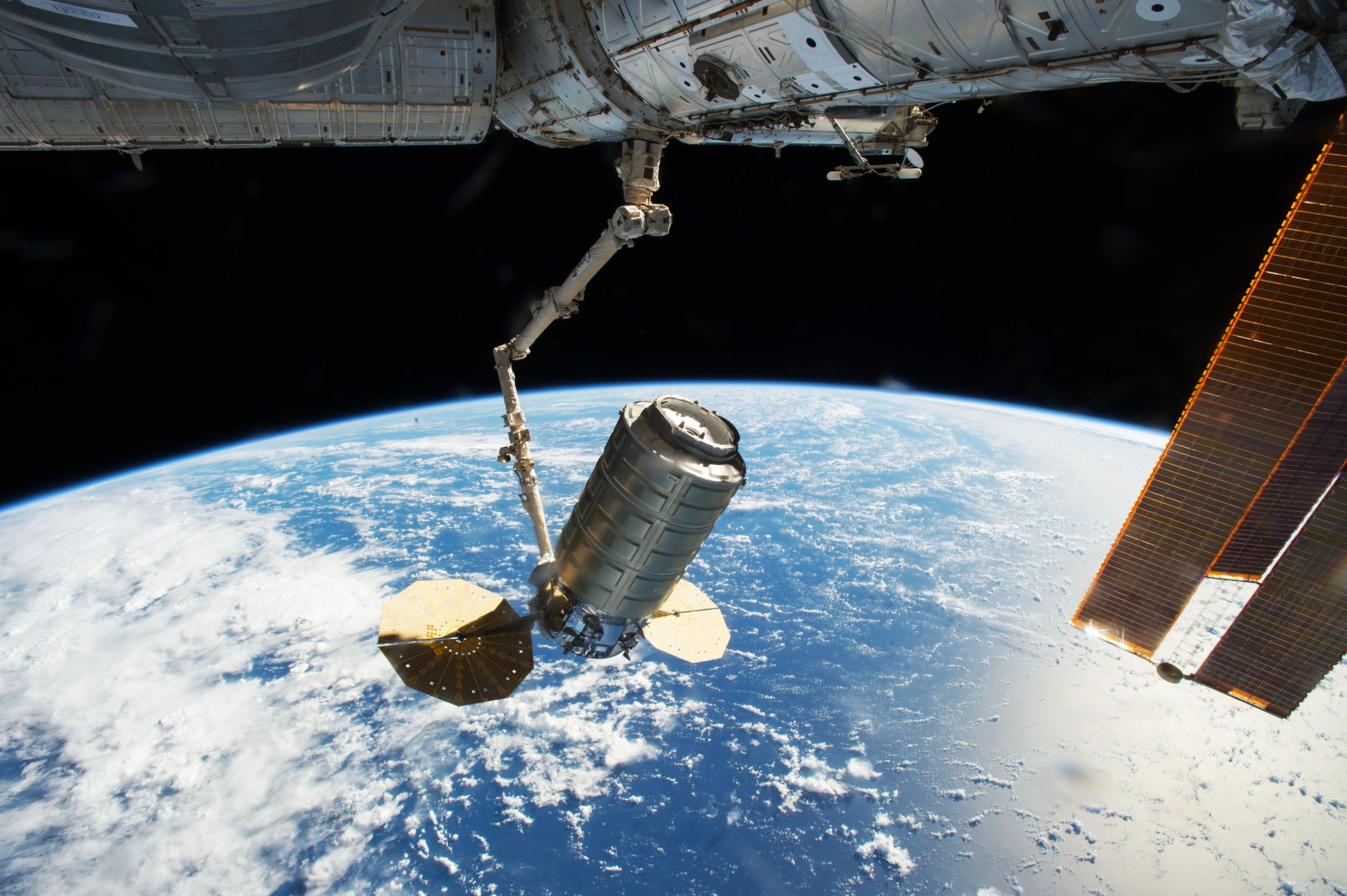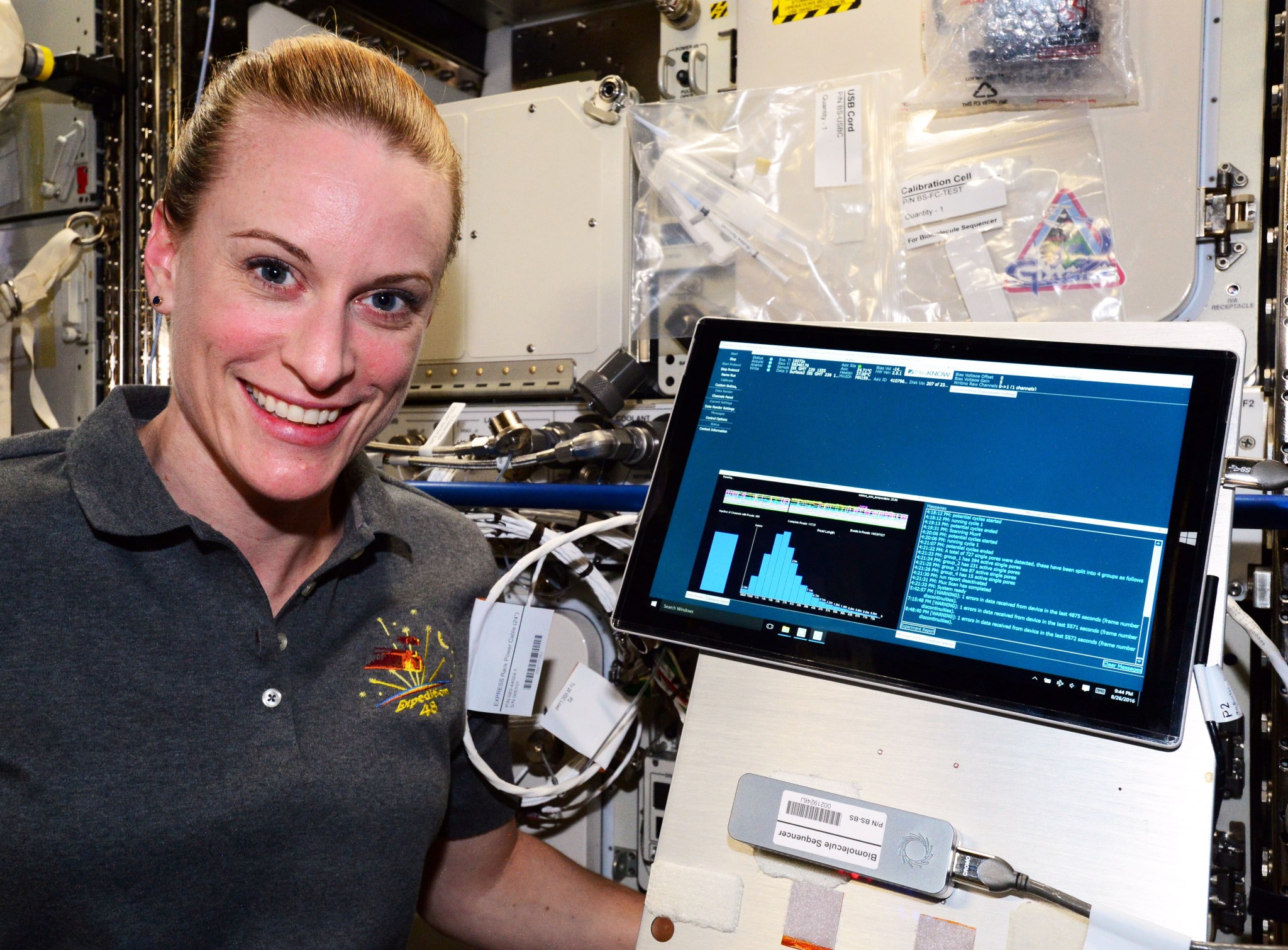By Bob Granath
NASA’s Kennedy Space Center, Florida
The International Space Station serves as the world’s leading orbital laboratory where crews conduct cutting-edge research and technology development. A crucial resupply line of spacecraft keeps work going that will enable human and robotic exploration of destinations beyond low-Earth orbit.
The next mission to the orbiting outpost will be Orbital ATK‘s seventh commercial resupply services (CRS-7) flight. Liftoff will take place from Space Launch Complex 41 at Cape Canaveral Air Force Station. The actual liftoff date will be determined when United Launch Alliance resolves a booster hydraulic issue that was discovered during prelaunch testing.
Cygnus consists of a pressurized cargo module for crew supplies, scientific experiments and equipment, together with an associated service module providing solar power and propulsion.
When members of the space station’s Expedition 50 crew opens the hatch, they will be greeted with a sign noting the spacecraft was named in honor of John Glenn.
The spacecraft will launch on a United Launch Alliance Atlas V. The booster and Centaur upper stage for the mission arrived at Port Canaveral, Florida, Feb. 6. From the port, the launch vehicle was transported to the hangar at the Atlas Spaceflight Operations Center, located south of pad 41. After the Atlas V completed final testing in that facility, it was moved to the Vertical Integration Facility for stacking.
The Orbital ATK Cygnus pressurized cargo module arrived at the Space Station Processing Facility (SSPF) at NASA’s Kennedy Space Center Jan. 9. The Cygnus service module arrived shortly thereafter.
In the SSPF, technicians and engineers loaded supplies, equipment and scientific research materials aboard a Cygnus PCM. Once mated to its service module, the spacecraft was transported to the Payload Hazardous Servicing Facility for propellant loading and final stowage of supplies.
After the Cygnus was encapsulated in its payload faring, it was transported to pad 41 to be mated atop the Atlas booster for final launch preparations.
When Orbital ATK CRS-7 arrives at the space station, Expedition 50 Commander Shane Kimbrough of NASA and Flight Engineer Thomas Pesquet of ESA (European Space Agency) will capture Cygnus with the station’s robotic arm. After receiving ground commands, the arm will rotate and install Cygnus on the bottom of the station’s Unity module.
The space station crew will unpack the Cygnus and begin working with the experiments that include the following:
Genes in Space II
It is well known the rigors of spaceflight induce changes within the human body. The Genes in Space II experiment is designed to study one such change, a shift in the dynamics of telomeres, critical protective caps on the tips of chromosomes. A chromosome is a packaged and organized structure containing most of the DNA, or deoxyribonucleic acid, of a living organism — the instructions each cell in an organism on Earth needs to live. The shortening of telomeres over time, as an individual ages, is natural, but stresses — such as those experienced by astronauts — can lead to deviations in regulation of telomere length, which has been implicated in a variety of diseases. This investigation seeks to determine whether telomeric DNA can be measured during spaceflight.
Biomolecule Sequencer
The Biomolecule Sequencer investigation is designed to determine if it is possible to establish the order of base pairs in a section of DNA while in Earth orbit. A space-based DNA sequencer could identify microbes, diagnose diseases and understand crew member health and potentially help detect DNA-based life elsewhere in the solar system.
As part of the Biomolecule Sequencer experiment in August 2016, DNA was successfully sequenced in microgravity for the first time by NASA astronaut Kate Rubins during Expedition 48. Sequencing DNA in space may allow astronauts to diagnose an illness, or identify microbes growing in the space station and determine whether or not they represent a health threat.
Saffire III
The Cygnus spacecraft will spend approximately four months attached to the space station. Cygnus will remain until June 21, 2017, when the spacecraft will depart. On June 28, it will return through a controlled destructive re-entry into Earth’s atmosphere over the Pacific Ocean.
But even the re-entry will offer an opportunity for further research. The third Spacecraft Fire Experiment, or Saffire III, will provide a unique environment for studying fires in microgravity. After Cygnus separates from the station a flame will be lit. The ignition is controlled from a ground station that will activate a hot wire, beginning an experiment that lasts about two-and-a-half hours. These experiments will advance capabilities for flammability tests and provide a testbed for the technology development for devices that detect gases and particulates from a fire, as well as scrub the atmosphere after a fire so it is safe for the crew.
Transformative capabilities and cutting-edge technologies such as those being launched aboard Orbital ATK CRS-7 are examples of expertise being developed, tested and flown today to support human exploration beyond the moon and ultimately, to Mars.
















